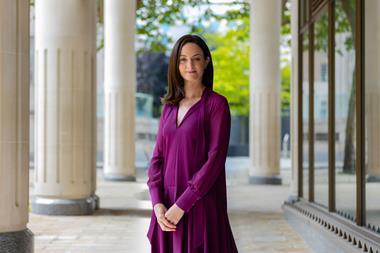The Italian government yesterday met with the three main unions to start negotiating specific aspects of the reform of the country’s pension system.
“The aspects relating to the introduction of a contributory guarantee pension for young people and for those who have started working since 1996” have been “examined in depth” during the meeting, said Ignazio Ganga, the confederate secretary of the Italian Workers’ Trade Unions Confederation (CISL).
The pension system in Italy transitioned in 1996 from pensions calculated on salaries received in the last years of employment, so-called ‘sistema retributivo’, to a new system where pensions are calculated on contributions – ‘sistema contributivo’.
CISL highlighted that employees who have been paying contributions under the new system today are not entitled to a supplement on the amount of pension.
It also stressed how important it is setting up a mechanism for supplementary pensions for people who, despite having paid several years of contributions, will receive a low pension because they have been working mostly on short-term contracts or in underpaid jobs, the union said in a statement.
The government and the unions have also discussed in yesterday’s meeting the negative impact of past reforms on pensions for women.
The goal, at the end of the rounds of negotiations, is to structurally change the previous reform of the pension system put in place with the Fornero law (named after the Minister of Labour and Social Policies Elsa Fornero), in 2011, the Italian Labour Union (UIL) said.
According to the unions’ proposal, the period of time spent caring for a family and family members with disabilities, the period spent training and in education, and those in involuntary unemployment should count to calculate pensions.
For women, unions are proposing the reform to take into account the period of maternity leave as an important requirement to access retirement age without pension cuts.
The unions have also proposed to review the income ceiling to receive pensions, and to adjust life expectancy to overcome the automatic mechanism of a rising life expectancy and a review of the coefficients used to calculate the amount of pensions under the new contributory system.
The next meetings between the unions and the government are scheduled for 27 January and 3 February, said Roberto Ghiselli, the confederate secretary of the General Confederation of Labour (CGIL).
Discussions in the next meetings will touch on the reform of the second pillar and flexible retirement age. The parties will meet on 7 February for a recap of the results achieved in the negotiations.
Initial steps
The government has taken recently initial transitional measures to start “fixing” the system with a view to reforming the Fornero law next year.
It has decided with the budget law for 2022 to test out only for this year the option of an early retirement for employees in the public and private sectors, but excluding members of pension funds for professionals (casse di previdenza professionali), who have reached 64 years of age and have paid 38 years of contributions – a measure called ‘quota 102’.
This replaces ‘quota 100’, which was introduced for a period of three years from 2019 to 2021, giving the option of an early retirement to employees in the public and private sectors – but not to members of pension funds for professionals – with 62 years of age and 38 years of contributions.
The government has also extended ‘APE sociale’, a compensation paid by the Istituto Nazionale della Previdenza Sociale (INPS), until 31 December 2022 for certain categories of workers, for example unemployed or those who take care of relatives with a disability, or employed in strenuous jobs.
It has also extended the possibility of an early retirement for women, through the so-called ‘Opzione Donna’, for those 58 years old if employed, or 59 years old if self-employed, and for those that have at least 35 years of contributions, provided that they opt for a pension pay-out under the new contributory system.










No comments yet